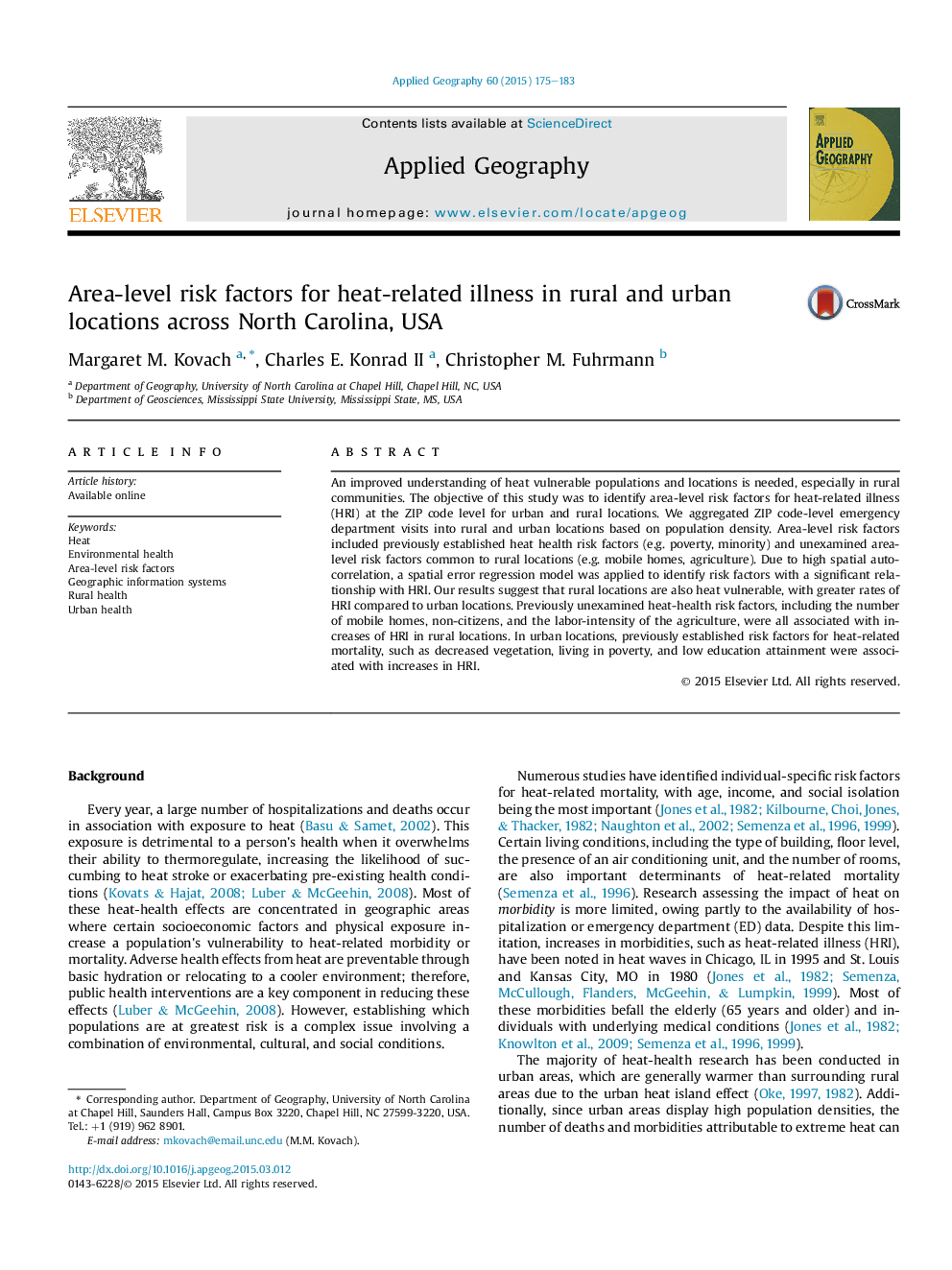| Article ID | Journal | Published Year | Pages | File Type |
|---|---|---|---|---|
| 6538567 | Applied Geography | 2015 | 9 Pages |
Abstract
An improved understanding of heat vulnerable populations and locations is needed, especially in rural communities. The objective of this study was to identify area-level risk factors for heat-related illness (HRI) at the ZIP code level for urban and rural locations. We aggregated ZIP code-level emergency department visits into rural and urban locations based on population density. Area-level risk factors included previously established heat health risk factors (e.g. poverty, minority) and unexamined area-level risk factors common to rural locations (e.g. mobile homes, agriculture). Due to high spatial autocorrelation, a spatial error regression model was applied to identify risk factors with a significant relationship with HRI. Our results suggest that rural locations are also heat vulnerable, with greater rates of HRI compared to urban locations. Previously unexamined heat-health risk factors, including the number of mobile homes, non-citizens, and the labor-intensity of the agriculture, were all associated with increases of HRI in rural locations. In urban locations, previously established risk factors for heat-related mortality, such as decreased vegetation, living in poverty, and low education attainment were associated with increases in HRI.
Related Topics
Life Sciences
Agricultural and Biological Sciences
Forestry
Authors
Margaret M. Kovach, Charles E. II, Christopher M. Fuhrmann,
